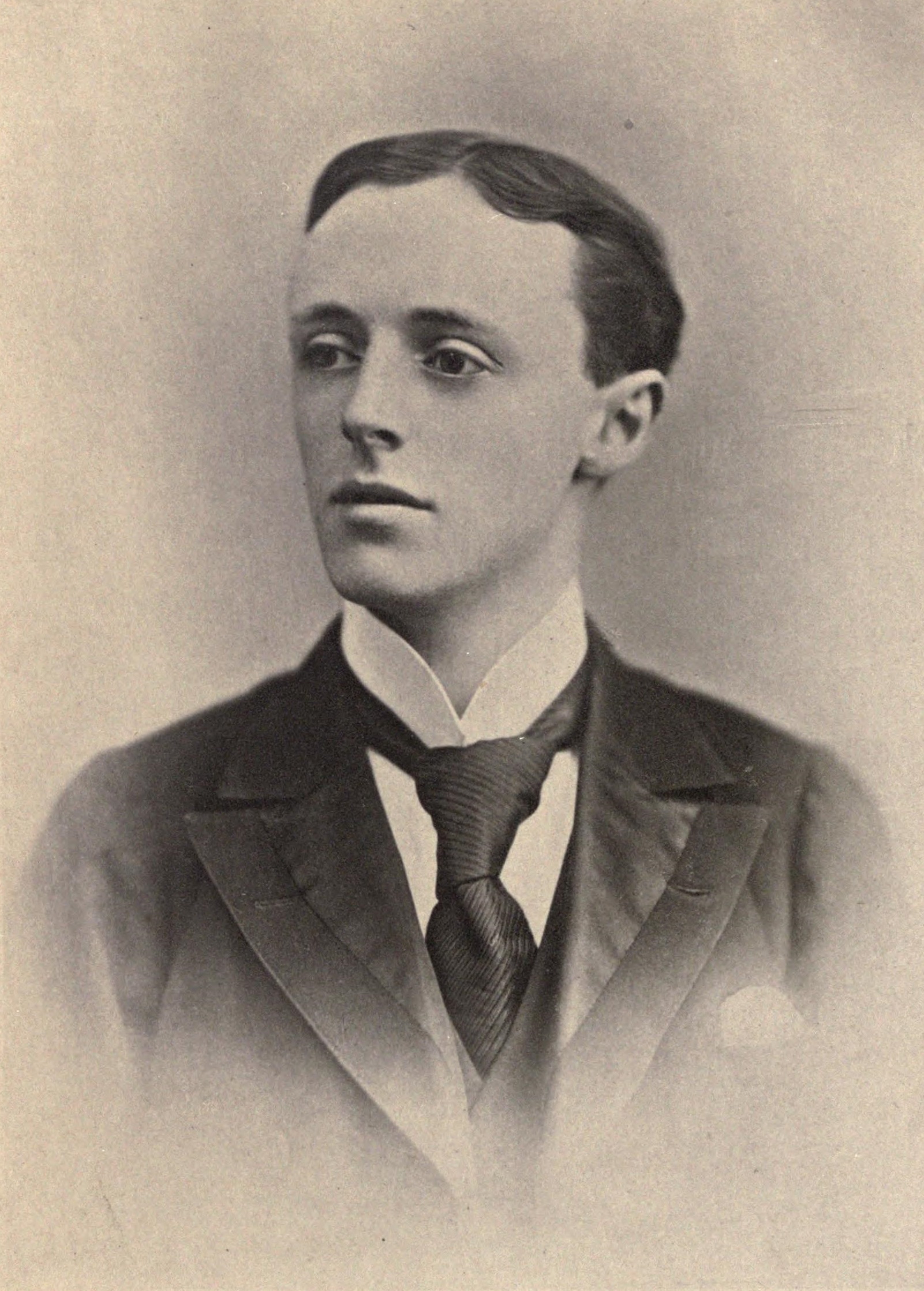Hubert Crackanthorpe
(1870 – 1896)
The fiction writer who became known as Hubert Crackanthorpe was born Hubert Montague Cookson in London on 12 May 1870. He was the eldest of three sons of Montague Hughes Cookson (1832-1913), a Queen’s Counsel (the most senior type of independent lawyer) sometime counsel to the University of Oxford, and a writer on eugenics. His mother, Blanche Crackanthorpe (1847-1928), was also a significant writer of the 1890s. The family took the name Crackanthorpe in 1888 as a condition of succeeding to large family estates in the north of England.
Crackanthorpe attended Eton School for five years and was then engaged in private study in England and France, some of it under Selwyn Image (1849-1930). The relationship with Image brought Crackanthorpe into the circle of the Fitzroy Settlement of the Century Guild of Artists. Here he would have met such “men of the nineties” as Richard Le Gallienne (1866-1947), Ernest Dowson (1867-1900), Lionel Johnson (1867-1902), and John Gray. (1866-1934)
Crackanthorpe entered the literary world in 1892, at the age of twenty-one, editing a literary magazine named the Albemarle. The periodical was financed by his father and featured work by some of the above named literary figures. His first collection of stories, Wreckage, was published by Heinemann in 1893; his second collection, Sentimental Studies , was published by the same house two years later.
The private thoughts and infidelities, both mental and physical, of bourgeois married life preoccupied Crackanthorpe as a writer. Crackanthorpe was also a country person, writing about characters in the Cumbrian and French countryside that he knew so well. In these rural stories he also focused on misguided hopes and unrequited loves.
Crackanthorpe married Leila Macdonald (1871-1944) on St Valentine’s Day 1893. She had been born in 1871 in Mayfair to wealthy parents who died when she was young. She was brought up by her grandfather, the judge and scientist Sir William Grove. Leila was a poet who published verse in The Yellow Book, to which Crackanthorpe also contributed.
Their married home was Lindsey House at 96 Cheyne Walk on the Chelsea Embankment, formerly the home of James McNeill Whistler. The marriage broke up shortly after Leila miscarried in 1896. She went travelling and took a lover. Crackanthorpe also went abroad, with Sissie Welch, the sister of Richard Le Gallienne.
Crackanthorpe, Leila, and both their new lovers lived together for a time in a rented apartment in Paris. Leila eventually left and officially asked for a divorce, citing “legal cruelty,” meaning the transmission of venereal disease to a spouse.
Crackanthorpe found himself in an impossible position, presumably because the charge was true. He drowned himself in the Seine on 5 November 1896. His body was recovered on 23 December and removed to London. There was no inquest in France or Britain.
At the time of his death, he had written two volumes of short stories and a book of travel writing. His mother collected his unpublished stories after his death with an “appreciation” by Henry James (1843-1916).
His early death produced eulogies from the likes of Le Gallienne, who declared him “the Chatterton of the English novel”; and excoriation from detractors of Decadence and realism in writing, who saw in his death evidence of “diseased morals.”
© 2010, Jad Adams
Jad Adams is a Visiting Research Fellow at the Institute of English, School of Advanced Study, University of London. His books include biographies of Ernest Dowson (2000) and Kipling (2005), and Hideous Absinthe (2004). He has published papers on the Crackanthorpes, the Cumminghame Grahams, the Clarke Halls and on Ethel Colburn Mayne.
Selected Publications by Crackanthorpe
- Last Studies: with a poem by Stopford A. Brooke and an appreciation by Henry James. London: Heinemann, 1897.
- The Light Sovereign: A Farcical Comedy in Three Acts (With Henry Harland).London: Lady Henry Harland, 1917.
- Sentimental Studies, and a Set of Village Tales. London: Heinemann, 1895.
- Vignettes: A Miniature Journal of Whim and Sentiment. London: John Lane, 1896.
- Wreckage. London: Heinemann, 1893.
Selected Publications about Crackanthorpe
- Adams, Jad “The Drowning of Hubert Crackanthorpe and the Persecution of Leila Macdonald.” English Literature in Transition 1880-1920. 52.1 (2009):6-34.
- Crackanthorpe, David. Hubert Crackanthorpe and English Realism in the 1890s. Columbia: U of Missouri Press, 1977.
- Gatton, John Spalding “ ‘Much Talk of the Y. B.’: Henry Harland & the Debut of The Yellow Book.” Victorian Periodicals Review 13.4 (1980):132-134.
- Mix, Katherine Lyon. A Study in Yellow: The Yellow Book and its Contributors. Lawrence, Kansas: U of Kansas Press, 1960.
- Whittington-Egan, Richard, and Geoffrey Smerdon. The Quest of the Golden Boy: The Life and Letters of Richard Le Gallienne. London: Unicorn Press, 1960.
MLA citation:
Adams, Jad. “Hubert Crackanthorpe (1870-1896),” Y90s Biographies, 2010. Yellow Nineties 2.0, edited by Lorraine Janzen Kooistra, Ryerson University, 2019, https://1890s.ca/crackanthorpe_bio/.
